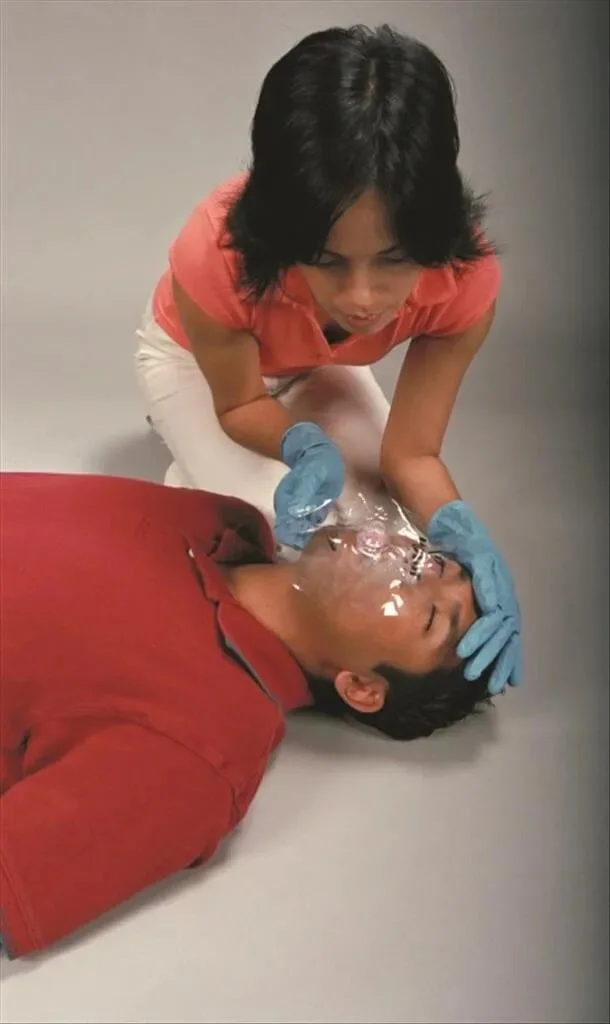Why is performing rescue breaths beneficial for CPR
first aider with cpr mask in training
Performing rescue breaths in CPR (Cardiopulmonary Resuscitation) is beneficial for several reasons:
1. Oxygen supply: Rescue breaths provide oxygen to the victim's lungs, which can be critical in cases where the person has stopped breathing or has inadequate breathing due to cardiac arrest or respiratory failure. Oxygen is essential for the body's vital organs, especially the brain, to continue functioning.
2. Oxygenated blood: The rescue breaths help oxygenate the blood that circulates to the rest of the body. This oxygenated blood can support the function of vital organs, helping to prevent organ damage and improving the chances of survival.
3. Carbon dioxide removal: Besides supplying oxygen, rescue breaths help remove carbon dioxide (CO2) from the victim's lungs. Accumulation of CO2 in the body can lead to acidosis, which can negatively impact organ function. Ventilating the person's lungs helps remove excess CO2 from the bloodstream.
4. Improved chances of defibrillation success: When an automated external defibrillator (AED) is available in cases of sudden cardiac arrest in cases of sudden cardiac arrest, rescue breaths can improve the likelihood of successful defibrillation. Adequate oxygenation of the heart muscle can make the heart more responsive to defibrillation, potentially restoring a normal heart rhythm.
5. Combining compressions with breaths: CPR is most effective when both chest compressions and rescue breaths are performed together. Combining chest compressions to circulate blood and rescue breaths to provide oxygen ensures that the body receives oxygenated blood, which is crucial for survival.
It's important to note that the American Heart Association (AHA) and other resuscitation guidelines, such as the Australian and New Zealand Committee on Resuscitation (ANZCOR), have evolved. In some cases, hands-only CPR (chest compressions without rescue breaths) may be recommended for specific situations, such as when someone is untrained or unwilling to perform rescue breaths. However, in many cases, performing rescue breaths is still a vital component of high-quality CPR and can significantly increase the chances of a successful outcome when performed correctly. Always follow the most current CPR guidelines and seek professional training in CPR techniques to ensure you provide the most effective care in an emergency.

